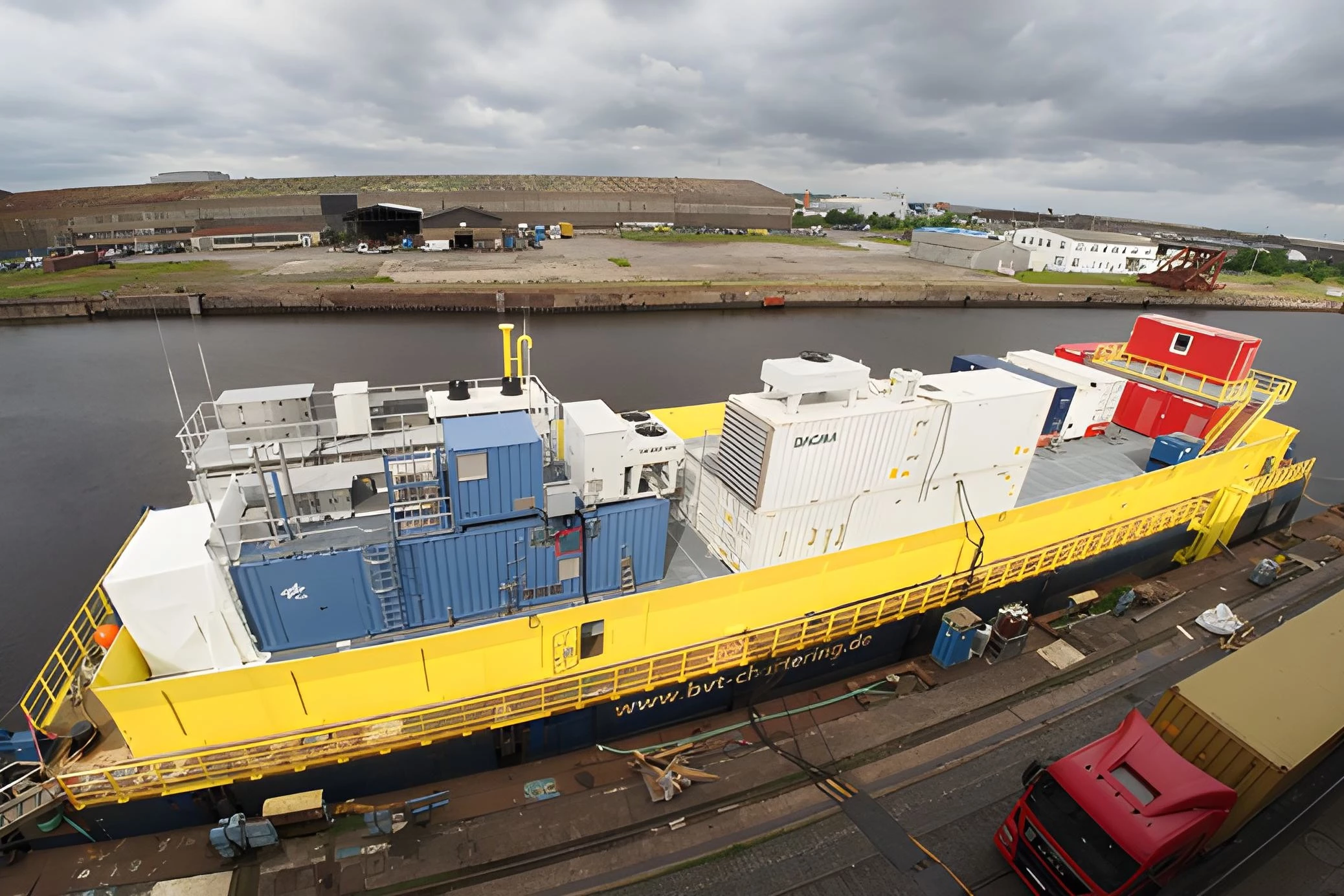A floating test platform that uses sea water, air, and wind to make completely clean hydrogen has begun operations off Germany's North Sea coast. The modular system also has a few other green-energy tricks up its sleeve.
Known as the H2Mare project, the platform takes advantage of the extra wind power available at sea to turn a turbine to produce electricity onboard. That electricity is used to power a pair of proton-exchange-membrane (PEM) electrolyzers that split the surrounding seawater into its constituent components of oxygen and hydrogen. In this way, it produces completely clean hydrogen, sidestepping some of the environmental concerns associated with production of the gas, especially with the high carbon cost of some of its manufacturing methods.
Running an electrolysis system directly from seawater can be tricky though, so the test platform also uses the heat generated from the electrolyzers to power an on-board desalinization plant. This will help the research team figure out if it is more efficient to use fresh, rather than salt, water to get to the hydrogen.
The H2Mare platform will also have the ability to use the hydrogen it produces to operate an onboard Fischer-Tropsch synthesis process in which it will be combined with carbon monoxide pulled out of the air to produce a range of synthetic fuels including diesel and gasoline. The platform will also see experiments conducted to research the green creation of additional fuels such as methanol, ammonia, and liquid methane.
In addition to the dizzying array of science that will be conducted aboard the platform, another part of the project is to investigate the logistics of launching such a project.
“We wanted to test the entire planning process including approval, construction, and real-world operation of the plant to learn how to draw up concepts for building larger production platforms,” said Roland Dittmeyer, head of the Karlsruhe Institute of Technology's Institute for Micro Process Engineering and coordinator of the “PtX-Wind” portion of the H2Mare project, which is focused on using green hydrogen to produce other downstream products.
The test platform begins operations this month at the port of Bremerhaven, Germany, and will be subsequently moved to the open sea near the Helgoland archipelago. While it is considered to be the first floating wind-powered platform to demonstrate the creation of multiple fuels from a clean energy source (known as Power-to-X), in terms of at-sea clean hydrogen production facilities, it was preceded by the Sealhyfe offshore platform, which began operations in 2023.
Sources: Karlsruhe Institute of Technology, Fraunhofer Institute for Wind Energy Systems, Federal Ministry of Research, Technology and Space





